Earn 106 PDH Credits
Read a chapter in the digital Engineering Handbook and take the chapter quiz to acquire PDH credits.
Now available through the Price Learning Portal
Chapter Summaries
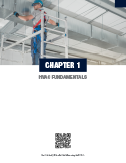
Chapter 1
Basics of HVAC
0.0 PDH Credits - 19 pages
This chapter discusses the function of HVAC Systems, describes HVAC operating characteristics, including zoning, solar loading, constant air volume and variable air volume. Also outlined and described here are the components of different air systems.

Chapter 2
Fluid Mechanics
2.0 PDH Credits - 20 pages
This chapter focuses on the fundamental concepts of fluid mechanics as they specifically relate to the HVAC industry, including friction losses, pressure measurement, and induction.
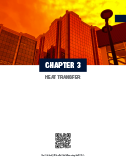
Chapter 3
Heat Transfer
3.0 PDH Credits - 33 pages
This chapter reviews the basic heat transfer processes that are relevant to the HVAC industry, and defines introductory HVAC concepts relevant to later chapters in the Handbook.

Chapter 4
Indoor Environmental Quality
5.0 PDH Credits - 37 pages
This chapter focuses on the factors of Indoor Environmental Quality (IEQ) that are directly affected by HVAC systems, namely indoor air quality and thermal comfort.
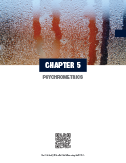
Chapter 5
Psychrometrics
12.0 PDH Credits - 61 pages
This chapter focuses on the study and analysis of the thermodynamic properties of moist air and the application of these properties in the heating, ventilation, and air conditioning process.
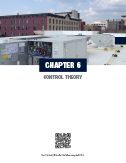
Chapter 6
Control Theory
0.0 PDH Credits - 34 pages
This chapter explains the building HVAC control system used to control the equipment used to maintain thermal conditions in occupied spaces. The discussion includes HVAC system components that operate together to monitor and diagnose the system, and integrate the HVAC equipment with other building systems, typically referred to as the Building Automation System (BAS).

Chapter 7
Acoustics
5.0 PDH Credits - 23 pages
This chapter provides a basic understanding of acoustics, including fundamental concepts and measurement procedures in the field and the laboratory. Several methods of rating HVAC sound sources are presented. This knowledge will provide the groundwork for understanding noise control concepts in the following chapters.

Chapter 8
Duct Design
8.0 PDH Credits - 44 pages
This chapter provides an understanding of duct design with respect to the building design process. This design has a direct impact on the energy utilization and the overall efficiency of the building HVAC system. The discussion helps the reader to understand the importance of correctly sizing the duct – incorrectly sized duct will have excessive friction losses, wasted energy, and the risk of inadequate cooling or heating. System effect is also explored to help the reader understand how duct selection impacts the airflow turbulence.

Chapter 9
Mixed Air Distribution
13.0 PDH Credits - 84 pages
This chapter provides a concise approach to the proper selection of air distribution outlets with an emphasis on occupant comfort, air quality, and energy conservation.
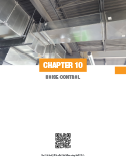
Chapter 10
Noise Control
6.0 PDH Credits - 51 pages
This chapter provides an overview of how to estimate the sound pressure levels in an occupied space, attenuation factors for different duct elements, and suggest criteria for different spaces. Additionally, specific noise control products such as duct silencers, acoustic panels and air transfer silencers are described, and their use illustrated through examples.

Chapter 11
Controls
2.0 PDH Credits - 49 pages
This chapter describes the various controls options available, with a particular emphasis on VAV terminals and rooftop units. System control strategies are also presented in a focused review of building automation and control networks.

Chapter 12
Air Terminal Units
7.0 PDH Credits - 96 pages
This chapter discusses what a terminal unit is, how it is applied and the multiple options available. The discussion then focuses on the critical nature of terminal unit selection and application as vital components to the overall HVAC building system and how they have a direct impact on the acoustical field and thermal comfort of the occupied space.
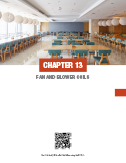
Chapter 13
Fan Coils and Blower Coils
0.0 PDH Credits - 31 pages
This chapter provides an overview of the various fan coil and blower coil products available in the market, including typical applications for each. Guidelines are presented for zone piping as well as a comprehensive discussion of controls options and strategies. Selection, installation, and maintenance information is also included.

Chapter 14
VAV Diffusers
5.0 PDH Credits - 25 pages
This chapter describes the operation of VAV diffusers as well as their major benefits. Guidelines are presented for outlet selection and layout as well as duct pressure control techniques for several HVAC systems.
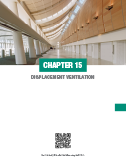
Chapter 15
Displacement Ventilation
3.0 PDH Credits - 79 pages
This chapter focuses on the main design criteria for displacement ventilation systems and introduces its common applications. The following chapter goes further into depth on the specific requirements of schools, theaters, health care and industrial spaces.
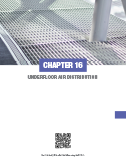
Chapter 16
Underfloor Air Distribution
6.0 PDH Credits - 114 pages
Underfloor air distribution (UFAD) systems create a general upward flow of air in the space and, like displacement ventilation, allow the effective removal of heat, pollutants, and odors. This chapter presents an introduction to UFAD and provides application information for the unique requirements that influence design procedure and equipment selection.

Chapter 17
Active and Passive Chilled Beams
7.0 PDH Credits - 98 pages
Active and passive beam systems use water as well as air to transport energy throughout the building, offering savings in energy, space, and maintenance costs. This chapter introduces active and passive beam systems and their design considerations and addresses the unique requirements of some of the most common applications.

Chapter 18
Radiant Heating and Cooling
6.0 PDH Credits - 81 pages
This chapter offers an introduction to the products, systems and design methodology of radiant heating and cooling systems. The material presented in this chapter addresses their application, sizing and design calculations, control strategies as well as the advantages and limitations of each.
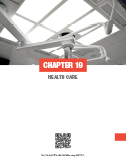
Chapter 19
Health Care
8.0 PDH Credits - 70 pages
Health care facilities include a wide range of different spaces, all with unique HVAC requirements. This chapter on the fundamentals of health care ventilation covers general topics including pathogen origin and airborne disease transmission, filtration, noise control, suitable health care air outlets and air movement products, as well as emerging technologies for hospital air distribution and energy savings.
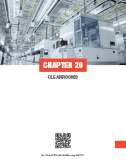
Chapter 20
Cleanrooms
2.0 PDH Credits - 27 pages
Cleanrooms are specific spaces where the control of particulates is critical to the process occurring, and great care must be taken to avoid introduction and generation of particles while also removing existing particles quickly. This chapter examines the standards, products, system designs, layouts, and considerations of specific cleanroom spaces.
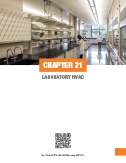
Chapter 21
Laboratory HVAC
4.0 PDH Credits - 37 pages
Laboratories are diverse spaces, making air distribution and control design challenging and highly variable. This chapter covers topics such as airflow control devices, fume hoods and equipment, along with additional space considerations, and is intended to offer some background and basics required for the efficient design of laboratory distribution systems.
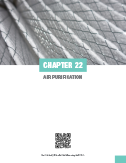
Chapter 22
Air Purification
4.0 PDH Credits - 27 pages
This chapter seeks to understand the origin and movement of unwanted airborne particulates in the airstream and considers how to utilize air purification technologies to capture and remove those particulates from the breathing zone of occupants.


